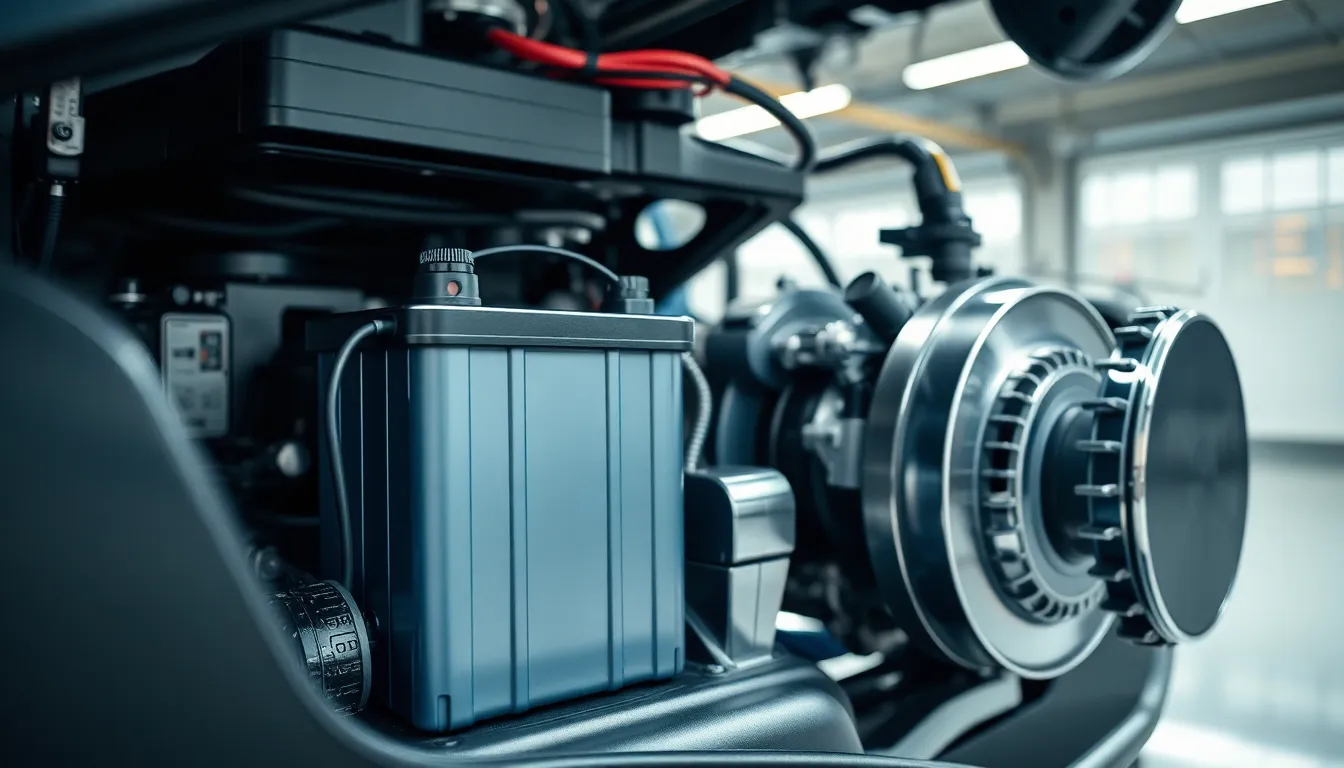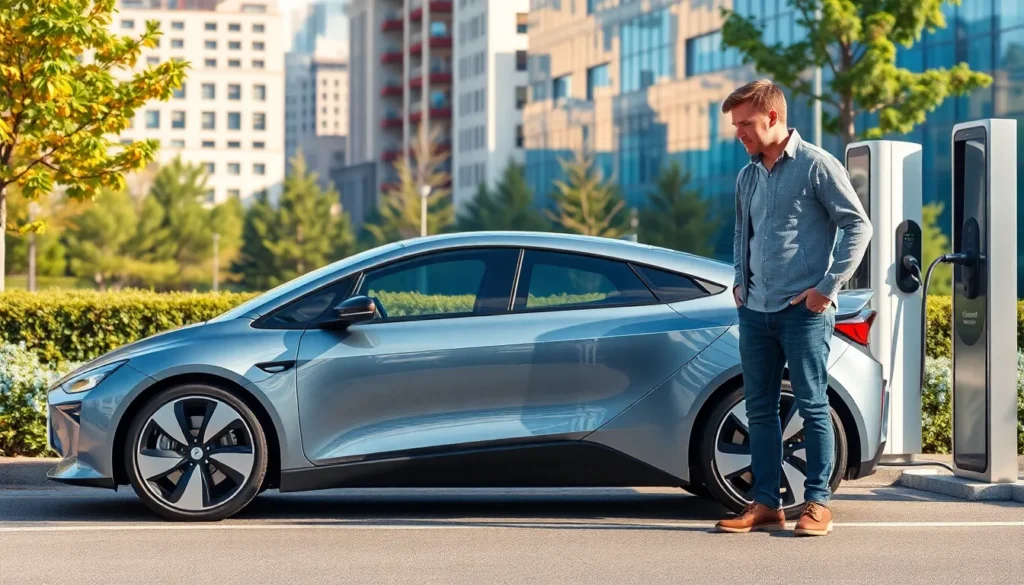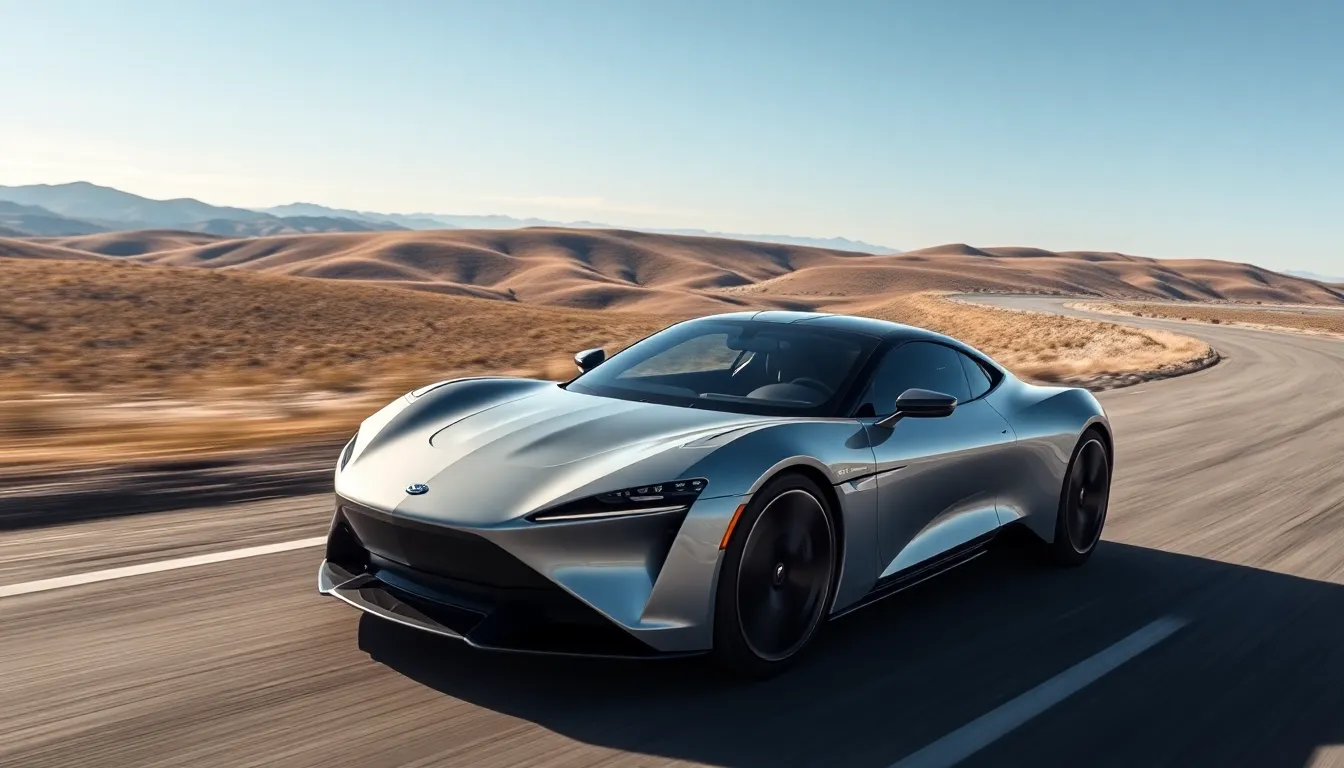Electric vehicles are like the superheroes of the automotive world, swooping in to save the planet one silent ride at a time. With their sleek designs and eco-friendly vibes, they’re not just a trend; they’re the future of transportation. But how do these modern marvels actually work?
Imagine a car that doesn’t just sip fuel but guzzles electricity like a toddler at a juice box party. From high-capacity batteries to regenerative braking, electric vehicles are packed with technology that makes them both efficient and fun to drive. Buckle up as we dive into the electrifying world of EVs, where the only emissions are the sound of your favorite playlist blasting through the speakers.
Table of Contents
ToggleHow Do Electric Vehicles Work
Electric vehicles (EVs) operate using a propulsion system that relies on electricity rather than traditional combustion engines. This system comprises several key components, each playing a crucial role in how EVs function.
- Battery Pack
Battery packs store electricity in high-capacity lithium-ion batteries. These batteries power the vehicle’s electric motor and are designed for longevity and efficiency. For instance, many modern EVs offer a range of over 200 miles on a single charge.
- Electric Motor
Electric motors convert electrical energy into mechanical energy, allowing the vehicle to move. With fewer moving parts than internal combustion engines, electric motors provide smoother acceleration and lower maintenance costs.
- Regenerative Braking
Regenerative braking captures energy typically lost during braking and redirects it back to recharge the battery. This process enhances efficiency, allowing EVs to extend their driving range by recovering energy during deceleration.
- Power Electronics Controller
The power electronics controller manages the flow of electricity between the battery and the electric motor. It converts direct current (DC) from the battery to alternating current (AC) for the motor, ensuring optimal performance during different driving conditions.
- Charging System
Charging systems allow EVs to recharge their battery packs. EVs can connect to various charging stations, which include Level 1 (standard household outlets), Level 2 (dedicated charging stations), and DC fast chargers, enabling rapid charging for extended trips.
- Onboard Software
Onboard software optimizes the vehicle’s performance by managing battery health, energy consumption, and navigation to charging stations. Advanced systems also provide real-time data on energy usage and remaining range.
Understanding how electric vehicles operate highlights their advantages in energy efficiency and environmental impact, establishing them as a modern alternative to traditional vehicles.
Key Components of Electric Vehicles

Electric vehicles (EVs) comprise several key components that ensure efficient operation and performance. Each component plays a vital role in the overall function of the vehicle.
Electric Motors
Electric motors in EVs convert electrical energy from the batteries into mechanical energy for propulsion. Designed for high efficiency, these motors provide instant torque, resulting in swift acceleration. Various types of electric motors exist, including AC induction motors and permanent magnet motors. The choice of motor affects the vehicle’s performance characteristics, with some optimized for efficiency and others focusing on power output. Overall, the electric motor is essential for delivering an engaging driving experience.
Batteries
Batteries serve as the primary energy source for electric vehicles. Lithium-ion batteries are the most common type used due to their high energy density and longevity. These batteries store electricity and deliver it to the electric motor when needed. Battery capacity is typically measured in kilowatt-hours (kWh), impacting the vehicle’s range and performance. Advanced battery management systems monitor health and optimize charging, ensuring safety and efficiency. Overall, battery technology is central to the success of electric vehicles.
Charging Systems
Charging systems for electric vehicles vary widely, enabling flexibility for users. Chargers can be categorized into three levels: Level 1, Level 2, and DC Fast Charging. Level 1 chargers typically plug into standard household outlets, providing the slowest charging rates. Level 2 chargers operate at higher voltage, facilitating faster charging suitable for home or public stations. DC Fast Charging provides rapid charging capabilities, allowing for significant battery replenishment in minutes. Charging infrastructure is critical for the widespread adoption of EVs.
Types of Electric Vehicles
Electric vehicles (EVs) come in various types, each with unique operational mechanics and benefits. Understanding these types helps consumers choose suitable options based on their needs.
Battery Electric Vehicles (BEVs)
Battery Electric Vehicles (BEVs) operate solely on electricity stored in an onboard battery. These vehicles rely on electric motors for propulsion, delivering high efficiency and instant torque. Charging occurs via power outlets or dedicated charging stations, typically utilizing lithium-ion batteries. BEVs produce zero tailpipe emissions, significantly reducing environmental impact. Popular examples include the Tesla Model 3 and Nissan Leaf, showcasing how BEVs can blend performance with sustainability.
Plug-in Hybrid Electric Vehicles (PHEVs)
Plug-in Hybrid Electric Vehicles (PHEVs) combine internal combustion engines with electric propulsion. PHEVs utilize both a battery and a gasoline engine, allowing for flexible driving ranges. They can operate in electric-only mode for shorter trips and switch to hybrid mode for longer distances. Charging can occur at home or on the go, enhancing convenience. Notable examples like the Toyota Prius Prime and Chevrolet Volt illustrate the practicality of PHEVs for consumers seeking both electric efficiency and traditional driving options.
Fuel Cell Electric Vehicles (FCEVs)
Fuel Cell Electric Vehicles (FCEVs) use hydrogen as a fuel source, converting it into electricity through a chemical reaction. This process drives electric motors, providing a clean and efficient driving experience. FCEVs emit only water vapor, minimizing their environmental footprint. Hydrogen fueling stations are less common than EV charging stations, which limits widespread adoption. However, models such as the Toyota Mirai and Hyundai Nexo highlight advancements in FCEV technology, showcasing its potential for a sustainable transportation future.
The Charging Process
The charging process is vital for powering electric vehicles (EVs). Home charging stations offer convenience, while public charging infrastructure enhances accessibility for all drivers.
Home Charging Stations
Home charging stations allow EV owners to recharge their vehicles overnight. These Level 1 or Level 2 chargers connect to standard electrical outlets or dedicated circuits. Level 1 chargers provide about 4-5 miles of range per hour, ideal for overnight charging, while Level 2 chargers deliver 25-30 miles of range per hour, suitable for quicker top-offs. Many EV owners install Level 2 charging stations for efficiency. They often include features such as built-in timers and Wi-Fi connectivity to monitor charge status remotely.
Public Charging Infrastructure
Public charging infrastructure plays a crucial role in supporting EV adoption. It includes Level 2 public chargers and DC Fast Charging stations. Level 2 chargers function similarly to home systems but provide quick access in shopping centers or parking lots. DC Fast Charging stations, however, deliver up to 80% charge in as little as 30 minutes, making long trips feasible. Locations of these chargers are often available through apps, ensuring drivers can plan routes effectively. Accessing public charging networks enhances the overall usability of electric vehicles, encouraging broader acceptance.
Environmental Impact of Electric Vehicles
Electric vehicles (EVs) significantly reduce environmental impact compared to traditional gasoline vehicles. EVs produce zero tailpipe emissions, leading to improved air quality and lower greenhouse gas emissions. The shift from fossil fuels to electricity for transportation contributes to a decrease in overall carbon footprints, especially when powered by renewable energy sources.
Energy Source and Emissions
Electric vehicles utilize energy from various sources, including wind, solar, and hydroelectric power. A study by the Union of Concerned Scientists found that even when accounting for emission levels during electricity generation, EVs can produce fewer emissions over their lifetime compared to conventional vehicles, achieving up to a 50% reduction in lifecycle greenhouse gas emissions.
Battery Production and Recycling
Battery production for EVs involves resource extraction, which can have an environmental impact. However, advancements in battery recycling technology are addressing these concerns. According to the International Energy Agency, effective recycling can recover critical materials like lithium, cobalt, and nickel, reducing the need for new mining and minimizing waste. Programs to recycle batteries promote sustainability within the EV industry.
Noise Pollution Reduction
Electric vehicles also contribute to reduced noise pollution in urban areas. Unlike combustion engines, electric motors operate quietly, leading to tranquil environments. Studies indicate that widespread adoption of EVs could lower overall noise levels in cities, enhancing quality of life for residents.
Wildlife and Habitat Protection
Transitioning to electric vehicles aids in protecting wildlife and habitats from the adverse effects of pollution and climate change. As EV usage increases, the demand for fossil fuel extraction decreases, which can mitigate habitat destruction and safeguarding ecosystems.
These various aspects illustrate that while electric vehicles offer technological advancements in transportation, they also provide substantial environmental benefits.
Electric vehicles represent a transformative shift in how people think about transportation. With their advanced technology and eco-friendly benefits they not only enhance driving experiences but also contribute to a healthier planet. As the market continues to evolve consumers have a growing array of options tailored to their needs.
The ongoing development of charging infrastructure and battery technology further supports the widespread adoption of EVs. By choosing electric vehicles individuals can play a vital role in reducing emissions and promoting sustainability. The future of transportation is bright with electric vehicles leading the way.





